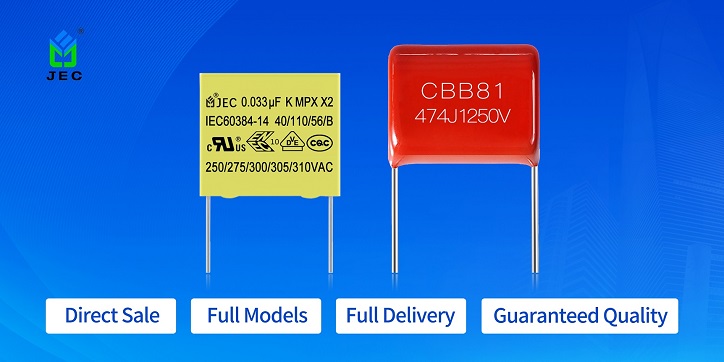As an important electronic component, film capacitors play an indispensable role in the electronics industry. Based on different structures, film capacitors can be divided into two main types: wound and stacked. So what are the differences between them?
Structural Differences
Wound film capacitors are constructed by alternating layers of metal foil and plastic film. This structure gives the capacitor a high capacitance density and relatively small volume, making it suitable for electronic devices with strict space requirements.
Stacked film capacitors, on the other hand, are composed of multiple film capacitor units stacked together, with each unit possessing independent capacitance properties. This structure provides stacked film capacitors with greater flexibility in capacitance, meeting the requirements of various circuits.
Performance Differences
In terms of performance, wound film capacitors typically have higher working voltage and lower leakage current. This makes them perform well in high-voltage and high-frequency circuits, such as communication equipment and power circuits. Additionally, wound film capacitors have lower equivalent series resistance (ESR), which helps improve the overall performance of the circuit.
Stacked film capacitors are known for their high capacitance values and excellent temperature stability. They can maintain stable capacitance performance over a wide temperature range, making them suitable for applications requiring high capacitance stability, such as power electronics systems and renewable energy devices.
Applications
In terms of applications, wound film capacitors, due to their small size and stable performance, are widely used in communication, computing, consumer electronics, and other fields.
Stacked film capacitors, on the other hand, are more commonly used in power, renewable energy, industrial control, and other fields due to their high capacitance values and good temperature characteristics.
Wound film capacitors and stacked film capacitors exhibit differences in structure, performance, and application fields.
In practical applications, it is important to choose the appropriate type of film capacitor based on specific requirements to enhance circuit performance and stability.
This article is provided by JYH HSU (JEC) Electronics. JEC is a research, development, production, and sales-oriented company specializing in manufacturing and selling various electronic components such as capacitors and resistors.
Post time: Apr-24-2024

